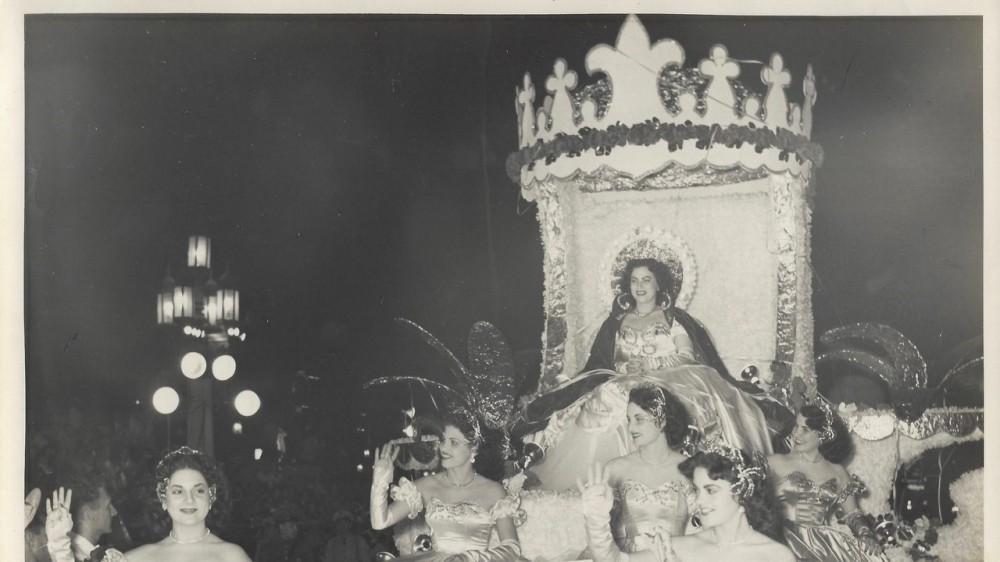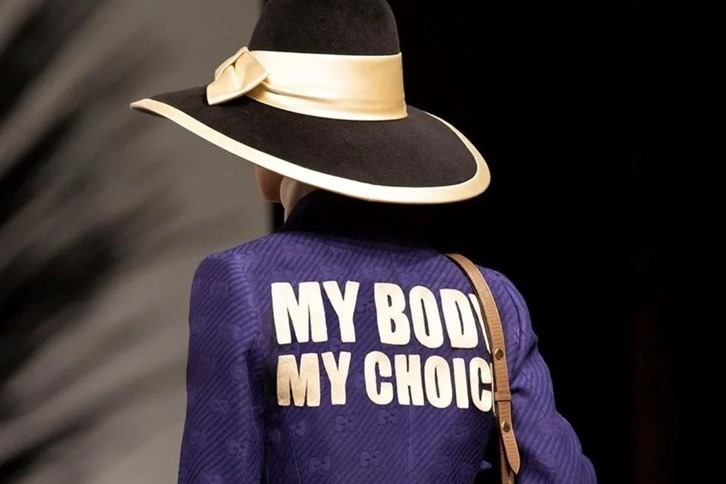
What I Learned About Glamour From My Abuela, Seamstress Extraordinaire and Beauty Queen
During strict stay-at-home orders last spring, I finally got to try on a cocktail dress my Abuela made. My mom and I were cleaning out the closets in my childhood home, as we became increasingly bored of other lockdown hobbies like baking and board games and even lego building. We sifted through the racks and I found my mother’s twenty fourth birthday dress—a ¾ sleeved, black lace midi with a pencil skirt, thick shoulder pads, and sequins stitched carefully throughout. I was unsure if it would even fit me, but I still asked if I could try it on, eager to see how it would look.
So I stood in front of the mirror, smoothed out the dress and smiled. My mom likes to use the word pintado when something looks really good on—painted in English. “Pintado right?” I turned to my mom, and she nodded in agreement.
Abuela Dalia had been a beauty queen and notable seamstress from Havana, Cuba. When the Cuban revolution was imminent, Abuela’s husband told her to pack all her belongings in two suitcases, as this was all the space she had on her flight to Miami. To make more room, she stitched prized possessions into her clothes: a pearl necklace in her breast pocket, her beloved pearl and diamond earrings in her coat’s cuff. But, she did wear her silver D charm around her neck, always in sight. Once they arrived in Miami, my Abuelo Rafael worked the sugar cane fields in Palm Beach, while Abuela worked in the back room at a prominent boutique. In our family lore, Abuela made a dress for this boutique that Jackie O liked so much, the First Lady bought one in every color available.
Everything Abuela touched was delicate, crafted in meticulous detail. She sewed my mother’s Halloween costumes, birthday dresses, and dream wedding gown. For the latter, Abuela took inspiration from Grace Kelly’s regal wedding dress and my mother’s ripped and pinned pages of Brides magazine. She personally designed the sleeved A-line dress with a lace, pearl-beaded bodice and a grandiose silk skirt held up by a petticoat. My mother still believes her wedding dress caused irreparable damage to Abuela’s eyesight. With every hand-stitched pearl and bead, it took Abuela six months to complete the bodice alone.
The attention to detail and craft carried itself beyond her sewing skills. Abuela lived for glamour, exemplified by the adamant upkeep of her skincare routine—she kept a tight regimen with a La Prairie cream at the center. When I was only a baby, she had asked her sister, Titi, to sew all of my frilly-trimmed baby dresses, as by this time she was starting to go blind. She would dictate to her sister how to seam the ruffles on the hem or what kind of collar might match better.
In her final years, she spent most of her time in bed in a small room at the back of my childhood home, in and out of dialysis treatments. Whenever I arrived home, she tried to yell my name and I carefully walked to her in response, ready to recite my activities from the day. She had lost her eyesight by then, and would reach out for my hand to feel me there beside her. Abeula passed away when I was seven.
Her legacy was passed down through the oral history of after-school stories my mother recited. She conjured up memories of Old Havana where my abuelos would take long walks down el Paseo del Prado or how my Abuela rode the Beauty Pageant float at Carnaval, as a runner up in the competition.
The author’s grandmother
My mother inherited this eye for glamour too. She learned to feel quality through her fingertips and understood the value of something well-made. When she and my Abuela went to Neiman Marcus in Bal Harbour, they would have a field day in the dressing rooms. Mami would try on different dresses, as Abuela would quickly sketch them down, noting the silhouettes and fabric. Then, Abuela would get to work on her designs, using her artistic license to create the right fit with just the right fabric. She had a contact in a New York store ship textiles from France straight to Miami, adamant on maintaining quality in every stitch.
When it was my turn to go to prom, my mom tried to mimic this experience for me. Instead of buying a dress off the rack, my mother decided that I would have a bespoke dress, as to avoid any duplicates at the dance. We went to department stores and I tried on too many dresses, trying to recreate the fantastical gowns I reblogged on my pastel-themed Tumblr. I used my burgeoning knowledge of designers and looked up runway collections from Oscar De La Renta to Alice + Olivia, or I would go straight to Elie Saab’s website and scroll through all the intricately beaded and belted dresses while letting out a very large sigh. After days of research, we settled on a mermaid silhouette with thick straps and a glittery bodice. Then we went to a local seamstress and explained our vision while she took measurements.
The fabric shopping was the most thrilling part. My mom would pick me up from school, and we’d bounce across Miami from fabric store to fabric store, finding, feeling, and discussing every roll in sight. There were arguments about what kind of fabric would be best, or what actually did look tacky, and that too much sequin could definitely be an issue. But we finally settled on a deep ocean blue silk crepe with a matching sequined and beaded fabric for the bodice. My mother did this too for my sisters’ graduation dresses, where she searched all of Miami for an off-white lace and eventually sourced it from a store in New York City.
After high school, I moved to New York for college and took a number of internships throughout my semesters. It was my sophomore year when I finally jumped and applied for a fashion news role at a magazine, armed with the lessons from my mother and Abuela. I can only imagine what my Abuela would say of my job now. I can feel her pride through my mother’s own, and also keep the small Cuban expressions I’ve learned close, like knowing when something really looks “pintado.” And everyday, I wear her silver “D” charm on my wrist.



